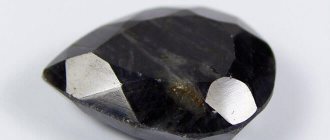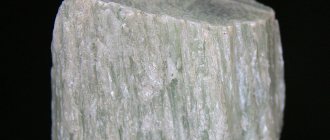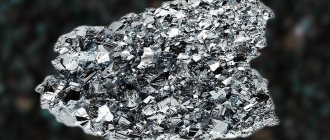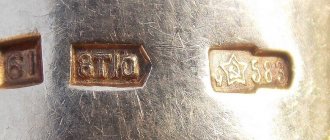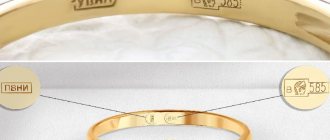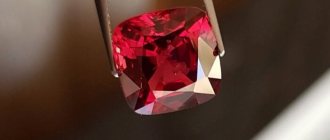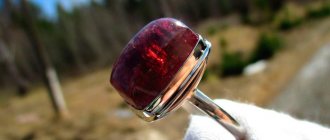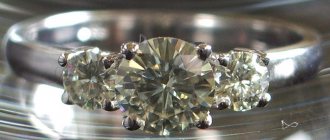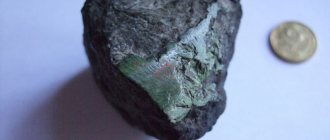Many things around are made from minerals and rocks mined from the depths of the earth. One of these minerals is limonite. It is the raw material for making iron and steel, which are then turned into household metal appliances. It is also used to make bright jewelry that brings aesthetic pleasure and is sold at an affordable price.
Description and main properties
The name of the mineral "limonite" is translated from Greek as "leimon", which means meadow or swamp. However, it has nothing to do with real lemon, which can be eaten. The mineral received its name from the place where its first nugget was discovered, which was found at the bottom of the estuary. Limonite origin is associated with very wet areas , so geologists call it “swamp ore” or brown iron ore.
Limonite belongs to the class of Fe oxides and includes the following varieties: goethite, lepidocrocite, water formed during the adsorption process. Iron oxides occupy up to 90% of the volume of the mineral body. In small quantities it contains alumina, products of decomposed organic matter, and clay substances. In very small quantities, titanium, nickel, and chromium oxide may appear in it.
Limonite formula: FeO * OH * nH 2 O. It consists of 89.9% Fe 2 O 3 and 10.1% water. Initially, it had a different formula: 2 Fe 2 O 3 * 3 H 2 O. But then researchers proved that the mineral contains goethite and lepidocrocite, as well as a small amount of hematite.
The remaining representatives of the class contain more water and are called iron hydroxides. They are classified as hydrogels. Thus, this mineral cannot be classified as a separate mineral species.
Limonite color varies from yellow-brown to dark brown, almost black. Some varieties are painted black. may show through in red-brown tones when chipped .
The fossil may have a metallic, matte, resinous or even silky sheen. You can notice a rainbow reflection in the sinter formations. Hardness varies from 2 to 5.5. The fracture is conchoidal or earthy. The color of the line on the ceramic plate is red-brown. The mineral is isotropic. The fossil dissolves quite quickly in HCL , and when heated it is capable of releasing water.
With minor impact, the mineral crumbles. This is due to the high content of water in the mineral, which actively evaporates. Cracks then form, turning the mineral into powder. In this case, limonite has no aesthetic value, but can be used in the production of steel and cast iron. An amazing property of the mineral is its ability to exhibit magnetism, while under normal conditions it is non-magnetic. Limonite cleavage is zero.
The mineral has an orthorhombic system, its crystal structure is similar to the structure of diaspore. He is capable of producing doubles. Often found in stalactite, kidney-shaped, dense forms. Also found in the forms of beans, geodes, and oolites. Pseudomorphoses of siderite and pyrite are characteristic. Limonite comes in several varieties: brown glass head, iron ocher and bean ore.
The brown glass head is a sintered rounded form of limonite, with a smooth shiny brown surface.
Yellow ocher is also called iron ocher. The main purpose of its use is to obtain paints. It produces many flowers. And if you add ocher to dark paints, it will reveal unusual shades. It has a dry consistency in the form of a soft yellow powder.
The density is 4g/cm3. The mineral does not form crystals.
Chemical composition
Chemical composition. Fe2O3 - 89.9%, H2O - 10.1%. The water content is often higher than expected according to the formula: up to 12–14% (limonite). In this regard, several mineral species were previously identified, differing from each other in water content and some physical properties. It was established by X-ray measurements that in reality there is one compound with the ratio Fe2O3 : H2O = 1 : 1, which has a certain crystal structure. All the more water-rich varieties of iron hydroxides are essentially hydrogels and contain adsorbed water in different quantities (depending on the degree of dehydration). Therefore, limonite is not a separate mineral species, but is a hydrated variety of goethite.
Varieties . The so-called turyite, according to X-ray and thermal studies, turned out to be a mixture of goethite with hydrohematite and does not belong to the number of independent minerals. Accumulations of natural iron hydroxides in their mass, as a rule, are hydrated mixtures of goethite with lepidocrocite, as well as silica hydroxides, clay matter, etc. Such mixtures are usually called brown iron ores.
History of limonite
Limonite, also known as lignite and bog ore, is a mineral from the group of iron oxides. Its name indicates the relationship of the stone to ores with swamp and meadow origin, and comes from the Greek word “leimon”, which means “meadow”. Limonite rocks have been formed on our planet for 25 million years.
Historical birthplaces
Countless clusters of brown iron ore are distributed throughout Russia. Their bulk is located in the West Siberian iron ore basin. The largest is the Bakchar deposit of brown iron ore. It is located near the city of Tomsk. Also in the modern world, the following picture has emerged regarding the occurrence of mineral deposits:
- The Kolpashevo deposit is no less rich in ore production. The Orsko-Khalilovskoye deposit is widely known in the Southern Urals. It originated as a result of chemical weathering of ultramafic rocks.
- In the Middle Urals, the Alapaevskoye and Bakalskoye deposits have become widely known. They formed in the iron cap as a result of chemical weathering of siderite.
- The Kyshtym and Karabash deposits of brown iron ore also formed in the Urals. They were formed due to the weathering of pyrite in the iron cap.
- The deposits of the Tula and Lipetsk regions of Russia have become widely known. These, as a rule, include deposits of the late Paleozoic. The deposits of ocher, red lead and umber in the Kursk magnetic anomaly are of great industrial importance.
- The Kerch deposit in Ukraine, ocher deposits in Tajikistan, and oolitic iron ore deposits in Luxembourg are known. Despite the significant costs of extracting this mineral, widespread demand for it makes prospecting and production profitable.
Scientists claim that reserves of this mineral, mined from the bottom of reservoirs, can be restored in 15 years. In Karelia and Bashkortostan, widespread deposits of limonite are developed at the bottom of reservoirs. Rich iron ore basins have become widespread in Kazakhstan: the Kustanai and Aral iron ore regions.
Limonite deposits
Limonite deposits usually form in swampy areas, along coasts and at the bottom of seas and lakes; these deposits are sedimentary in type.
Large deposits of the mineral are known in Russia. Its industrial production is carried out in the west of Siberia, in the Tomsk region, in the Urals. Deposits of sedimentary origin have been developed in swamps and lakes in the Tula and Lipetsk regions, Karelia and Bashkortostan. Samples containing ocher are mined near Kursk. In addition, limonites are mined in countries such as India, Canada, Brazil, Venezuela, Angola, Brazil, Congo, Lorraine, Alsace and Cuba. — Advertising — Limonite accumulations are usually formed in areas where active oxidation of iron ore outcrops occurs. When the upper layers of iron ores are moistened for a long time, limonite is also formed.
There is also another theory for the formation of this mineral, namely, with the participation of iron bacteria (Mettallogenium Bacteria). This biogenic concept is interesting, but has not yet been proven to date.
Limonite deposits are also found in the beds of springs with highly mineralized waters.
In general, the mineral is very widespread and is found everywhere.
Mining locations
Stone deposits are formed where there is a lot of mineralized water: swamps, shores, the bottom of seas, rivers, lakes.
Large deposits in Russia are Western Siberia, the Urals, Karelia, Bashkortostan, Tomsk, Lipetsk regions. KMA is rich in the ocher variety of raw materials.
The stone is also mined in France, India, Madagascar, Brazil, Venezuela, and Congo.
Main mining methods
Minerals are extracted by open-pit mining by organizing quarries. The cheapest way to obtain it is blasting. To do this, an explosive device is placed into the rock using drilling and then an explosion occurs. A more economical option is to use an air cushion. In this case, a narrow channel is drilled into the rock, into which a reservoir of pressurized air is placed. And finally, the most expensive is extraction using a stone cutter.
Origin and locations
Limonite belongs to a rare group of minerals, the reserves of which are inexhaustible in the world. Layers of brown iron ore are formed in the earth's crust almost constantly.
Limonite, for the most part, is an exogenous mineral, because it is formed as a result of chemical weathering of pyrite, chalcopyrite, siderite, and hematite.
What they have in common is that they contain iron in their composition. Limonite can also form at the bottom of lakes and swamps from sediments containing Fe. Iron bacteria take an active part here.
Limonite under conditions of high temperature and pressure turns into hematite and magnetite. Thus, the mineral is formed in places where iron ore bodies are oxidized. Numerous limonite reserves are concentrated in Russia. On a large scale, its production is carried out within Western Siberia, in the Tomsk region, and in the Urals. Lake and swamp deposits of the mineral are common in Karelia, Bashkortostan, Tula and Lipetsk regions.
Swamp Ore
Ferric oxide hydrate is known by several names: limonite, legume or bog ore, brown iron ore, needle iron ore, goethite. The last name comes from the name of Johann Wolfgang Goethe, a poet, thinker, philosopher and natural scientist. The word "limonite" comes from the Greek "leimon", which means "meadow", as it is found in meadow and swamp ores.
The oldest name for ferric hydroxide is onegit, it is almost never used.
Physical research methods
Ancient methods. It melts under the soldering tube and becomes highly magnetic with prolonged heating.
Water is released in a glass tube, turns red, and turns into anhydrous Fe2O3.
Color ocher-yellow brown black Origin of weathering crust chemogenic Application ferrous metals mineral pigments Chemical elements /fe3+iron ion Hydrogen H Oxygen O
Physico-chemical characteristics of limonite
According to its chemical composition, limonite belongs to iron oxides.
Other similar minerals were found in its composition, for example, goethites and lepidocrocites, and adsorbed water. In general, limonite is an amorphous mineral, without a permanent stable chemical composition. For this reason, limonites are often not classified as a separate mineralogical group. In addition to goethites, they may also contain alumina, clay minerals, silica hydroxides, and decomposition products of organic compounds. Slightly less common are the oxides of titanium, phosphorus, chromium and nickel. The color palette of limonite is quite diverse, it includes shades of yellowish-brown and dark brown. Its dense masses are usually very dark, almost black. The luster of different limonites also differs; there are matte, metallic, silky and even resinous samples.
— Advertising —
The hardness of limonite is also not fixed due to its variable chemical composition; natural samples are soft, medium hard and hard. According to the Mohs scale, it can be assessed in the range of 1.5-5.5.
Limonite intergrowths are not characterized by cleavage. They are soluble in hydrochloric acid. At the break they are earthy or conchoidal.
A distinctive feature of limonite is that the mineral is non-magnetic, but if the sample is heated for a sufficiently long time, it may develop magnetic properties.
Physical properties Optical
The color of limonite and goethite is dark brown to black. Powdery or ocher limonite, often formed during physical weathering due to dense black limonite and iron silicates, has a rather light yellow-brown color. As comparative chemical and X-ray studies have shown, this ocher variety is no different from dense limonite.
- The features of goethite are brown with a reddish tint. Limonite mostly has a light brown or yellow-brown color.
- The luster of goethite is diamond to semi-metallic. On the surface of kidney-shaped or stalactite masses of limonite, goethite is often found in the form of shiny, pitch-black thin crusts.
Nm = 2.35–2.39.
- The shimmer is velvet (velvet blende), waxy, matte.
- Transparency. Opaque
Chemical composition
The chemical composition of brown iron ore is represented by iron (III) oxide and water in the following proportions: Fe2O3 – 86-89%, H2O – 10-14%. The proportions may vary, and therefore several varieties of limonite were previously identified. Limonite is now considered a hydrated version of goethite.
Goethite, or as it is otherwise called needle iron ore, is the main component of limonite. This mineral got its name in honor of the German writer I.V. Goethe, who was interested in mineralogy and had a large collection of stones. The formula of goethite is FeO(OH). The significant presence of this mineral in the aggregate makes limonite harder, because the hardness of goethite is 5-5.5 on the Mohs scale. Rhombic planaxial syngony.
Mechanical
- The hardness of goethite is 4.5–5.5, limonite - 4–1 (depending on the physical state).
- Density. 4-4.4.4, for limonite it ranges from 3.3 to 4.0.
- The cleavage of goethite along {010} is perfect.
- Kink. Rough, uneven, earthy.
Chemical properties. Behavior in acids. They dissolve slowly in HCl.
Other properties: it is often possible to observe in one sample the transitions of dense varieties into earthy ones; the properties of the mineral can accordingly vary within one sample.
Formula of goethite and limonite
Goethite - α-FeOOH or HFeO2
Limonite - HFeO2. aq or FeO*nOH
Crystallographic characteristics
Rhombic syngony; rhombodipyramidal mmm. V. With. Etc. gr Pbpt. a0 = 4.64; b0 = 10.0; с0 = 3.03.
The crystal structure is similar to the structure of diaspore.
Types of limonite
Two subspecies are known for the mineral limonite:
- The first of these has an unusual name and is known as the “brown glass head”. It is a round sintered growth. The surface of the mineral is smooth, shiny, and therefore resembles a head of rich brown color.
- The second variety of limonite is yellow ochre, also known as iron ochre. Artists often use it to produce paint. Based on it, it is possible to obtain a rich variety of colors, and even when added to dark paints, it gives interesting shades. Yellow ocher is a soft powder with yellow or orange hues.
Types of stone
Depending on the composition and density, two types of limonite are distinguished:
- “Glass brown head” - round growths that are smooth to the touch, thereby resembling a head and are distinguished by a silky shine and brown color.
- “Yellow Ocher” is a brittle yellow-orange mineral that easily grinds into powder. It is widely used among artists as a source of natural paints.
Based on color, limonites are divided into the following subspecies:
- lemon yellow;
- yellow-ochre;
- gray-brown;
- dark brown;
- orange-brown.
Varieties of Iron Oxide Hydrate
Limonite does not have a constant composition and includes foreign impurities. Accordingly, it has several varieties:
- Dense brown iron ore is a product of modification of sulfur pyrite or a compound called spar iron ore. It is characterized by an oolitic build. It occurs in pseudomorphs or veins in amphibolites, sandstones, and melaphyres.
- Slag b. and . has a conchoidal smooth fracture and a greasy sheen. It contains H3PO4 and nSiO2*mH2O.
- Ocher b. and . in its impurities you can find a variety of clay.
- Zhilkovy b. and . - a type of “brown glass head” in the form of a ball or something like a cluster of yellowish color, with a shell-concentric build. The surface is smooth, hemispherical.
- Sallow or kidney-shaped b. well , also known as turf ore . It is found in sandy lowlands in the form of pieces, buds or whole layers. It can be found among meadow, swamp and lake ores, as part of an admixture of sand and substances of organic origin.
- Interspersed b. and . “lives” in sandstones, limestones, clays, and siliceous rocks. In their natural form they are found in the form of shell-shaped iron buds.
Limonite: what kind of mineral is it?
Limonite: an industrial mineral Limonite is a common rock widely used as a raw material.
In a chemical sense, it is a hydrated mixture of iron oxides. It is used for further smelting of iron and steel. That is why this mineral is one of the most important.
Naturally, its extraction reaches enormous proportions. It is mined by all countries in whose territory limonite deposits were found.
Application
The mineral is classified as brown iron ore, which is used in the metallurgical industry for the production of steel and cast iron alloys. At enterprises with modern technologies, the volume of consumption of limonite for steel smelting is gradually reduced due to the presence of phosphorus in the composition of the mineral.
Earthy limonite is also used as a molding material, and in the chemical industry it is used to make paints. The amazing shades and shapes of raw crystals make limonite in demand in jewelry and collectibles. Beautiful jewelry is made from it - pendants, pendants, men's rings and rings, earrings and bracelets.
The gem combines most successfully with silver. Collectors are of particular interest in the mineral's pseudomorphs of marcasite and pyrite. Limonite does not have pronounced healing and esoteric properties, therefore it is not used in lithotherapy, magical rituals and astrology.
Where is it used?
The mineral is in demand for practical and aesthetic purposes.
The scope of application is determined by the conditions of the raw materials:
- The enriched material, purified from impurities, is used in metallurgy for the smelting of cast iron, steel, and alloys.
- Yellow ocher is in demand in the chemical and paint industries. This is the source material for making paints.
- Limonite inserts add uniqueness to jewelry. The gem in silver is especially good.
The color range and moderate shine of the stone make it possible to create a line that is suitable for men (cufflinks, rings, rings, key rings).
- Stone cutters turn out interior items and esoteric assortments (candelabra, balls, pyramids).
Collectors of mineral collections have a great demand for combined samples - limonite on pyrite, marcasite, quartz.
Application in the modern world
The use of limonite is mainly as a molding material. Paints are made from it, especially yellow ocher. The mineral and its pseudomorphoses are of exceptional importance to collectors. It is most often purchased by geologists, jewelers, and researchers to replenish their mineralogical samples.
The application of this material is very wide. It is popular in many areas of human life:
- This mineral is widely used in ferrous metallurgy, that is, after special processing it can be used as a raw material for the smelting of cast iron and steel. However, consumption volumes are reduced due to the presence of phosphorus in the mineral, which is extremely difficult to extract from the rock.
- This material also acts as an ore for producing iron. The mineral in combination with fine-grained cuprite is used to make cabochons. Excellent aesthetic qualities allow it to be used in jewelry. Since it acts as an ornamental stone, necklaces and bracelets and rings are made from it. This stone goes best with silver. Pseudomorphoses of limonite after marcasite and pyrite are especially interesting for jewelers.
- Used in the manufacture of interior items.
The mineral, according to many people, has healing properties. It helps improve well-being and increase performance. It also helps normalize blood circulation, blood pressure, treat nervous disorders, relieve depression, and maintain a normal heartbeat.
The main thing is to use the stone regularly and keep it with you.
The stone had no magical abilities. There is a private, unproven opinion that the mineral tends to develop in the person to whom it belongs a sense of intuition and supposedly can protect its owner from the evil eye, damage, and witchcraft from another person. Similar judgments suggest that limonite helps strengthen families and protects them from quarrels and separations. The main thing is to have a stone amulet in your home, with you, or at your workplace.
Interesting Facts
Many minerals have a rich history. In ancient times, priests used stones in their rites and magical rituals. But limonite cannot be called popular among clergy. Also, the stone is not in demand in astrology.
Some varieties of limonite have unusual structures, making them attractive to collectors. 5 years ago, one of these stones was sold to an unknown collector for a record amount of several tens of thousands of dollars.
The history of limonite is very ancient and dates back more than 10 million years. Even in the times of the pagans, the mineral was used for rituals. For these purposes, it was subjected to heat treatment and further grinding. In one of these treatments, it was discovered that the stone could be used to obtain iron. It was this fact, according to many scientists, that gave rise to the Iron Age. The reliability of this hypothesis is still being debated today.
Magic properties
The magical properties of limonite have been poorly studied. It is only known that this is an attribute of witchcraft rituals.
At the everyday level, the magic of the stone creates a protective energy cocoon around the owner and activates intuition.
Magic of stone
Limonite - brown iron ore
Esotericists practically do not use limonite in rites and rituals because of its weakly expressed magical properties. However, the power of the stone is enough for ordinary people to use it.
Limonite amulet protects its owner from the “evil eye”, envy, damage, evil intentions of ill-wishers, dangers and other troubles. The stone brings harmony to family life and helps spouses improve relationships after quarrels.
For people whose profession involves risk, the mineral will protect them from injuries and accidents. An amulet with it will give athletes, rescuers, and climbers confidence in their own abilities and actions.
Limonite is recommended to be worn as a talisman by people of creative professions. The energy of the stone radiates positivity, inspires new and unconventional approaches to art, and promotes the development of imagination.
In order for limonite to maximize its properties, you need to carry it with you at all times.
Price of products
Limonite is affordable, so anyone can buy it. Depending on the quality of the stone, as well as the size and type of product, the price varies within:
- 0.15-0.2 $ - for tumbling 10-20 mm in size;
- from $2 - for a stone processed with a cabochon measuring 30 mm or more;
- 10-30 $ - for an intergrowth of limonite with rock crystal;
- $15 – for earrings in silver with a stone up to 30 mm;
- from $30 per bracelet depending on the size of the stones.
Jewelry with high quality gemstones is more expensive. Their price is $250 and above.
Care
Limonite does not require diligent care. To keep it in its original form, you do not need any excessive effort. The main thing is not to drop the product and not expose it to chemicals. Clean the stone in soapy water with a small cloth. Does not like limonite and elevated temperatures. Therefore, it is best to remove jewelry before swimming.
Limonite is used in various fields of application, and in all, without exception, it shows itself with dignity. Another equally important advantage is the cost of the mineral. It is available to everyone.
How to care for stone
Limonite should be treated with care so that it retains its original beauty and color for a long time. To do this, it is recommended to follow simple rules:
- Designate a separate place for storing the stone. This could be a small box with soft upholstery inside, a case or a velvet bag.
- Remove jewelry with a gem while playing sports, taking a shower or bath, visiting a pool, sauna or bathhouse.
- Avoid exposure to mechanical factors and sudden temperature changes. The stone should be protected from impacts, falls and scratches.
- Do not wear limonite in direct sunlight, which has a negative effect on its structure and color.
- In case of contamination, wash the stone with soapy water and running water, and then be sure to wipe dry with a cloth. Do not use abrasive products or solutions containing acids for cleaning.
Mineral cost
The price of the material can vary significantly depending on its size, inclusions and the presence and complexity of the cut. The most common are unprocessed minerals. Such stones in most cases have various inclusions. The cost of such copies starts from 1200 rubles. One of the advantages of limonite is its availability. However, despite the low price, it is necessary to understand that this stone is unpopular. Thus, acquisition difficulties may arise. This especially applies to jewelry.
Sources
- https://natrukodel.ru/prochie/limonit
- https://zolotoe-runo-sl.ru/podelochnye-kamni/limonit-mineral.html
- https://mineraly-kamni.ru/limonit/
- https://natrukodel.ru/prochie/buryiy-zheleznyak
- https://natural-museum.ru/mineral/%D0%BB%D0%B8%D0%BC%D0%BE%D0%BD%D0%B8%D1%82
- https://MoyKamen.com/vidy/prochie/limonit-mineral.html
- https://TokyoStreet.ru/podelochnye-kamni/buryj-zheleznyak-formula.html
- https://vseprokamni.ru/interesno/limonit-mineral.html
- https://jgems.ru/interesnoe/limonit
- https://lutch.ru/podelochnye-kamni/limonit
- https://SilverRill.ru/kamni/limonit-proishozhdenie.html
- https://1kamni.ru/limonit/
